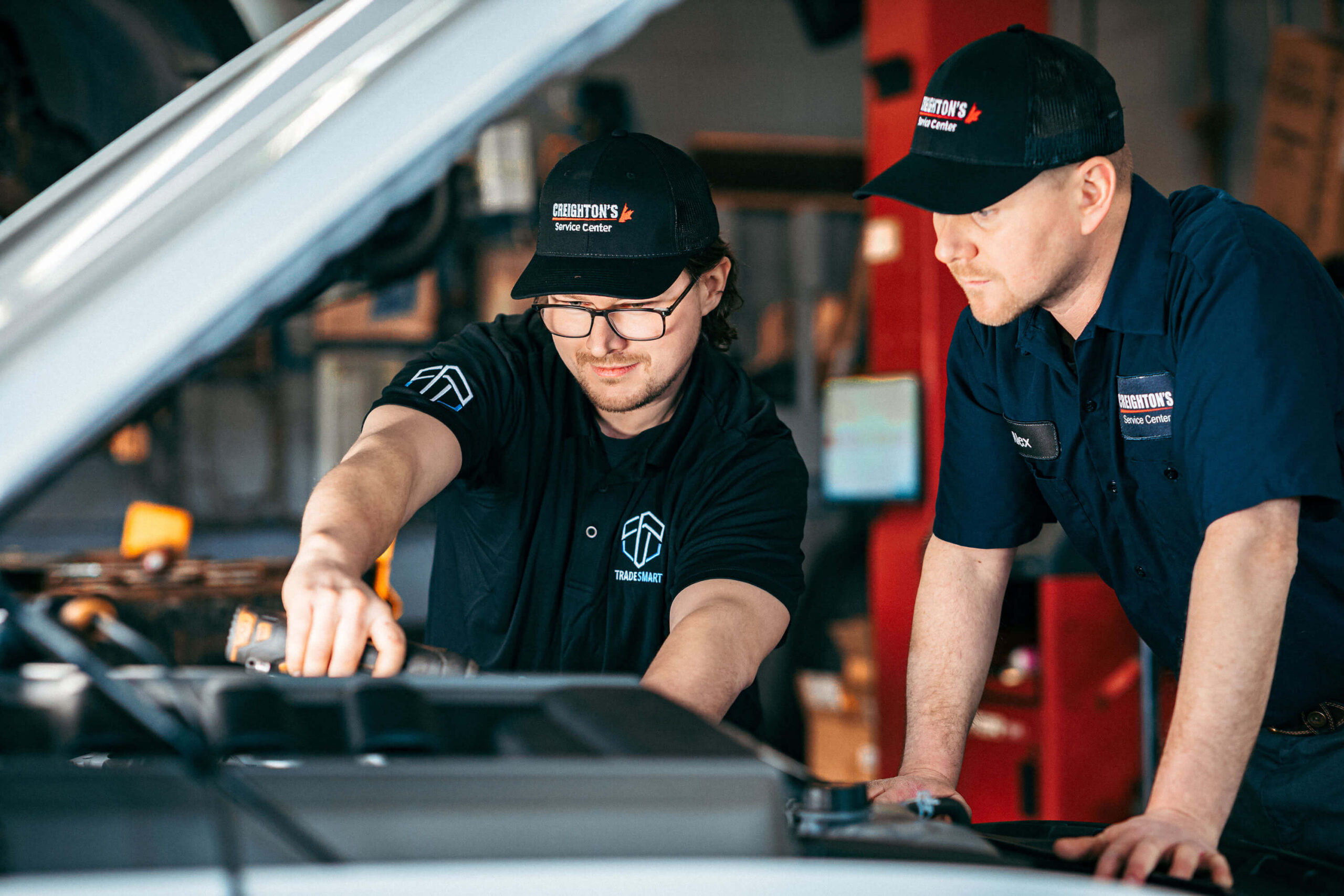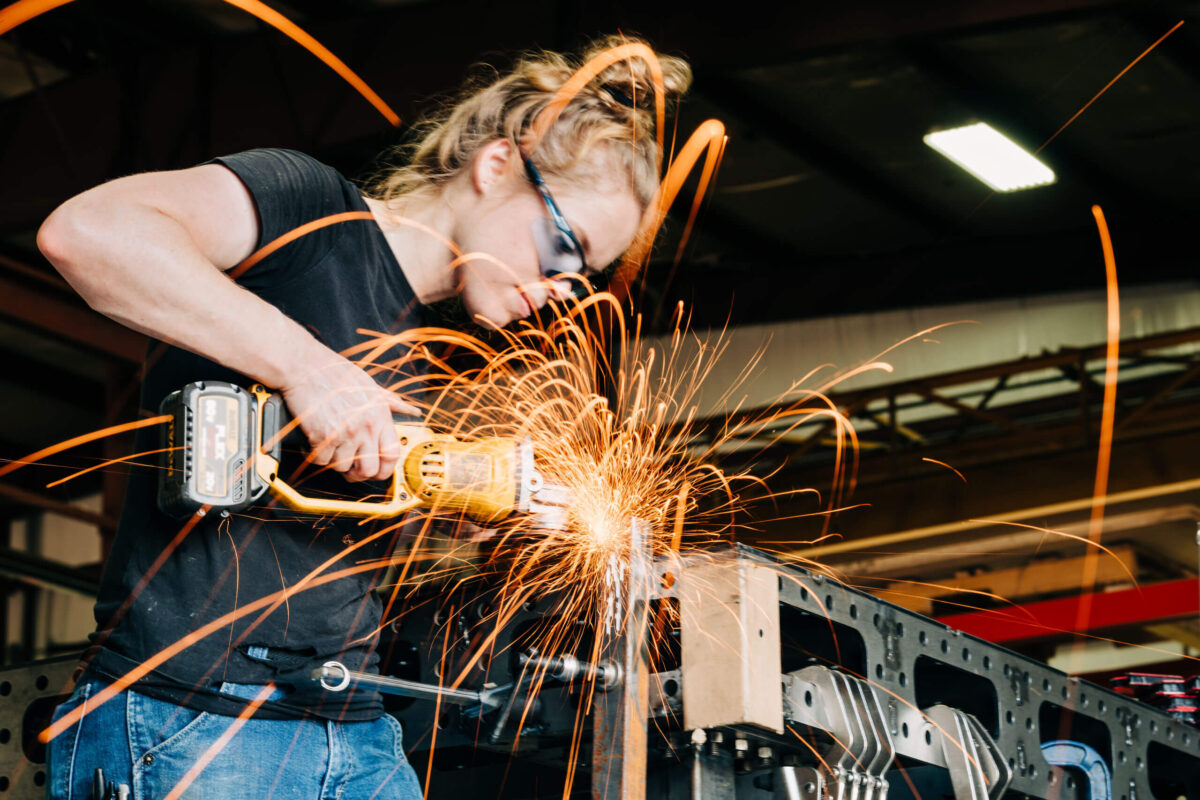The Skills You’ll Need: Why a Blend of Professional and Technical Skills Will Be Needed in Canada for the Next 40 Years
tradesmart23
on
March 18, 2025
The Skills You’ll Need: Why a Blend of Professional and Technical Skills Will Be Needed in Canada for the Next 40 Years

Introduction: The Productivity Problem and the Skills Solution
There is a productivity problem in Canada. For decades, our economic growth has lagged behind other developed nations, and the forecast isn’t looking any brighter. The main reason for this is a persistent and growing skills shortage. The Conference Board of Canada estimates that if we had addressed this issue over the past 20 years, our GDP would be nearly $50 billion larger today. Even more distressing is that we will rank last in GDP growth for the next 40 years out of all the world’s major economies. And it’s not just about technical skills, there is a significant shortage of professional skills as well.
For anyone considering a career in the skilled trades and construction sectors, this reality presents both a challenge and an opportunity. The challenge? No employer hires someone without experience. The opportunity? Employers aren’t just looking for technical know-how; they need prepared, focused, and reliable professionals who can work effectively in a team, solve problems, and adapt to change. The key to long-term career success in the trades is mastering professional skills before technical ones. At Trade Smart College, we recognize this reality, which is why our students get both professional and technical training—along with 950 hours of paid work experience—so they enter the workforce already ahead of the game.
Why Canada Needs Both Technical and Professional Skills for the Next 40 Years
The need for skilled tradespeople isn’t going away anytime soon. Infrastructure projects, green energy transitions, and an aging workforce are all creating huge demand for qualified workers in construction, manufacturing, and transportation. But while technical skills like operating heavy equipment, welding, or electrical wiring are essential, they are not enough on their own to fill the productivity gap.
Here’s why: skills shortages don’t just happen when there aren’t enough workers; they happen when workers aren’t fully prepared for the job. Canadian employers repeatedly highlight the lack of professional skills as a major barrier to productivity. Virtually every survey of employers and hiring managers over the past 50 years produces the same result: they look for professional or soft skills first and are willing to teach the more technical stuff later. Showing up on time, communicating effectively, thinking analytically, and adapting to new challenges are just as important as knowing how to use a tool or read a schematic. Over the next 40 years, the most productive and adaptable tradespeople will be those who master both sides of the equation—technical expertise and professional competence.
The Essential Technical Skills in the Trades and Construction Sectors
The technical skills required in the trades are constantly evolving, but certain core competencies will always be in demand. These include:
- Mechanical and electrical proficiency – The ability to install, repair, and maintain complex systems, from HVAC to industrial automation.
- Blueprint reading and spatial reasoning – Understanding technical drawings and specifications is essential for accuracy in construction and manufacturing.
- Material handling and safety compliance – From working with hazardous materials to maintaining workplace safety protocols, every trade requires knowledge of industry standards.
- Problem-solving and troubleshooting – Whether diagnosing a malfunctioning engine or adjusting a misaligned steel frame, the best tradespeople think on their feet.
But here’s the reality: technical skills can be taught on the job—but only to those who already have the professional skills to handle the work environment. No employer wants to waste time teaching someone how to be reliable or how to take instruction. That’s why, when choosing candidates, hiring managers always prioritize professional skills first.
Why Professional Skills Matter More Than Ever
In a perfect world, technical expertise alone would be enough to secure a high-paying job in the trades. But in reality, professionalism is what separates the workers from the leaders. The trades industry is full of talented people who never advance in their careers because they lack the professional skills to manage projects, communicate with clients, or work effectively in a team.
Some of the most in-demand professional skills include:
- Punctuality and dependability – A business can’t function if workers show up late or miss deadlines. Employers want people they can rely on and they will quickly fire those who can’t meet this most basic of requirements.
- Communication and teamwork – The ability to give and receive instructions, coordinate with colleagues, and interact professionally with clients is critical for all trades businesses. There are endless stories of jobs that have been lost because a junior employee makes a bad impression on a customer, and employers are constantly turning over people who put them at risk.
- Adaptability and continuous learning – Technology is reshaping the trades, from automation in manufacturing to digital tools in construction. Staying employable means staying adaptable.
- Work ethic and professionalism – The best-paid tradespeople aren’t just the most skilled—they’re the most professional. They take pride in their work and consistently prove their value.
In a productivity-driven economy, workers who demonstrate professional skills will always be the first to be promoted—and the last to be let go when times get tough.
The Link Between Professionalism and Productivity in the Trades
Canadian productivity isn’t just about working harder—it’s about working more reliably. A country with an abundance of workers but a shortage of professional skills will always struggle to keep pace with global competition. This is exactly the issue Canada faces today: there are plenty of people willing to work, but too few prepared, focused, and reliable professionals in the workforce.
Employers don’t have the time or resources to teach workers how to be professionals—they expect new hires to come in already understanding the basics of reliability, communication, and workplace etiquette. These should be table stakes when it comes to diplomas and degrees, but unfortunately, these skills are rarely mentioned in most courses, much less taught. That’s why students who prioritize professional skills before technical skills have an enormous advantage when entering the job market. They don’t just fill a position; they contribute to productivity, making them indispensable in any workplace.
Key Takeaways
- Canada’s productivity problem is largely driven by skills shortages, which include both technical and professional skills.
- The trades and construction sectors will be in high demand for at least the next 40 years, but technical skills alone won’t be enough for long-term career success.
- Employers prioritize professional skills—such as reliability, teamwork, and adaptability—because they are the foundation of a productive workforce.
- The most successful tradespeople are those who master professionalism first, allowing them to learn technical skills more efficiently and advance in their careers.
The Bottom Line: Professionalism First, Skills Second
If you want a long, successful career in the trades, technical expertise is only half the equation. The other half—and the most important half at the start of your career—is professionalism. Being prepared, focused, and reliable is what gets you hired and promoted. The most skilled worker in the world won’t get far if they can’t show up on time, follow instructions, and work as part of a team.
At Trade Smart College, we understand that professional skills are the foundation of a strong career. That’s why our training isn’t just about technical knowledge—it’s about preparing students to be the kind of professionals that employers want to hire. And with 950 hours of paid work experience, our students enter the workforce with both the skills and the confidence to succeed. The smarter pathway to the trades starts here.

We Need More People in the Skilled Trades
We Need More People in the Skilled Trades For decades, we’ve been hearing about the shortage of people entering the skilled trades, and it seems like the problem is getting worse, not better.

Your Chances of Getting an Apprenticeship in Ontario: By the Numbers
Your Chances of Getting an Apprenticeship: By the Numbers By any measure, Ontario is desperately short of skilled tradespeople. We need people now, but the first step in becoming a tradesperson is to

What’s the Highest Paying Trade in Ontario in 2024?
What’s the Highest Paying Trade in Ontario in 2024? Many of our prospective students ask some version of the question, “what is the highest paying trade in Ontario?” We understand the impulse behind

Your Meeting
Your Terms
Need more info? Looking to register? Want to find out about financing or start dates? Book a call, meeting, or text chat with Carrie our Student Success Manager.
Contact the Team
Campus Hours
- Mon- Fri: 7am- 5pm
- Open House - See Schedule









